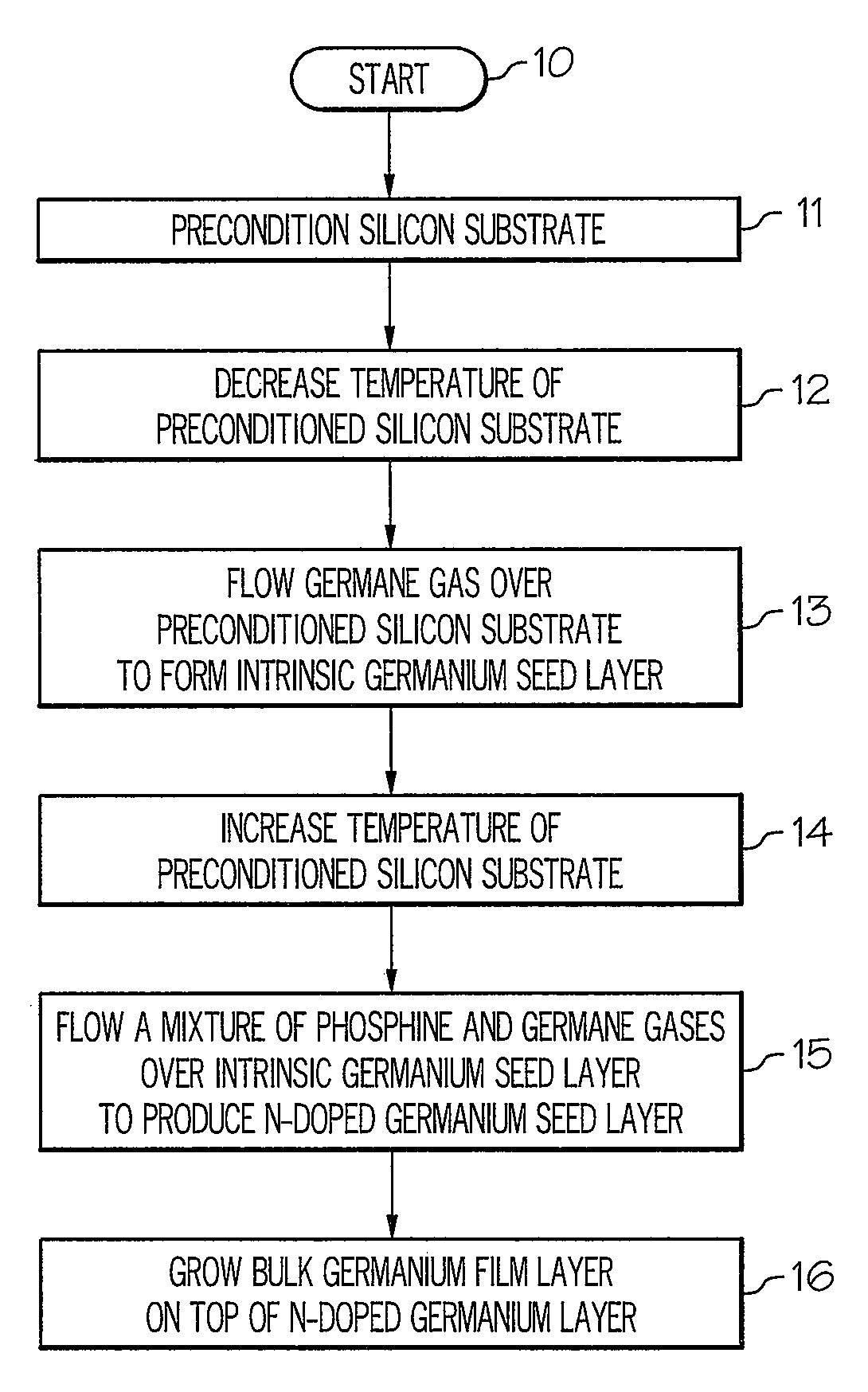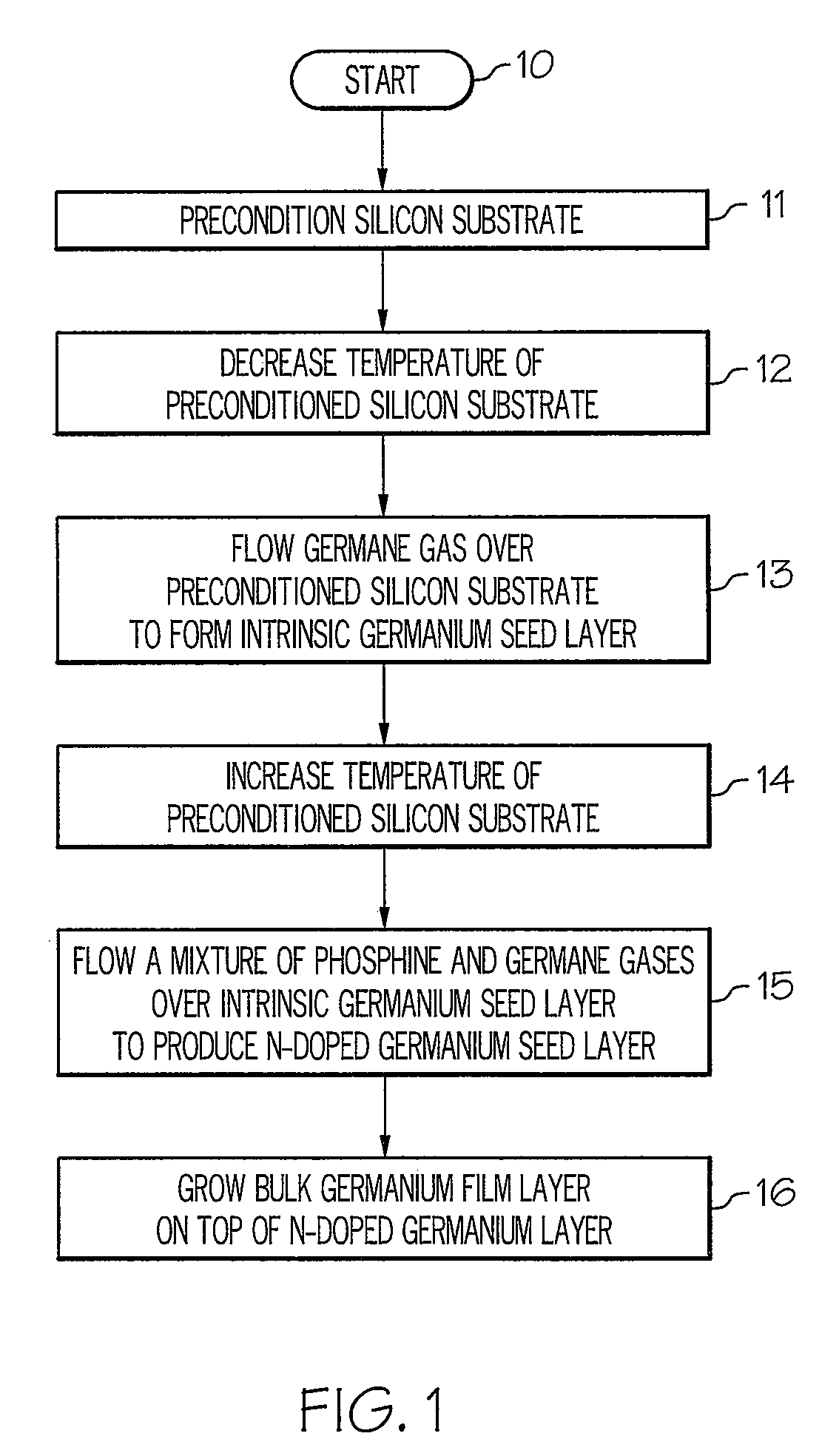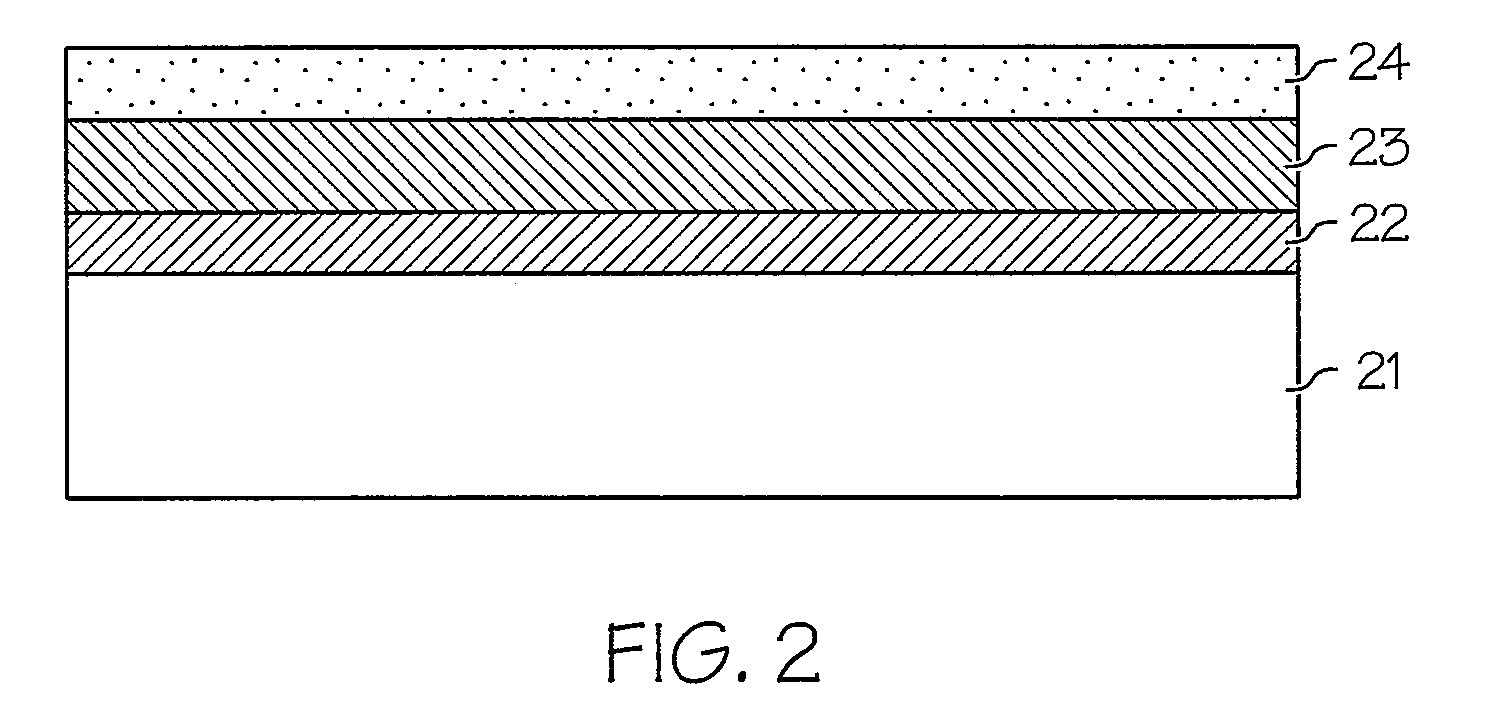Method for growing germanium epitaxial films
a technology of epitaxial film and germanium, which is applied in the direction of single crystal growth, polycrystalline material growth, chemistry apparatus and processes, etc., can solve the problems of low growth rate of underlying dielectric layer, high defect density, rough germanium film,
- Summary
- Abstract
- Description
- Claims
- Application Information
AI Technical Summary
Benefits of technology
Problems solved by technology
Method used
Image
Examples
Embodiment Construction
[0012]The desired smooth and highly selective germanium layer is formed using a UHV-CVD system. The formation can be completed by using the following gases: hydrogen, 100% silane (SiH4), 100% germane (GeH4), 1% diborane (B2H6) and 1% phosphine (PH3).
[0013]Referring now to the drawings and in particular to FIG. 1, there is illustrated a high-level process flow diagram of a method for growing germanium epitaxial films, in accordance with a preferred embodiment of the present invention. Starting at block 10, a silicon substrate is preconditioned with hydrogen gas at 750° C. for 60 minutes, as shown in block 11. The pressure of hydrogen is controlled at 3E−4 mBar.
[0014]Next, the temperature is ramped down from 750° C. to 350° C. in 200 minutes in vacuum at 2° C. per minute, as depicted in block 12.
[0015]Germane gas at 1.5E−3 mBar is flowed over the preconditioned silicon substrate for 120 minutes, as shown in block 13. This step initiates the layer-by-layer growth for approximately the ...
PUM
| Property | Measurement | Unit |
|---|---|---|
| temperature | aaaaa | aaaaa |
| temperature | aaaaa | aaaaa |
| temperature | aaaaa | aaaaa |
Abstract
Description
Claims
Application Information
 Login to View More
Login to View More - Generate Ideas
- Intellectual Property
- Life Sciences
- Materials
- Tech Scout
- Unparalleled Data Quality
- Higher Quality Content
- 60% Fewer Hallucinations
Browse by: Latest US Patents, China's latest patents, Technical Efficacy Thesaurus, Application Domain, Technology Topic, Popular Technical Reports.
© 2025 PatSnap. All rights reserved.Legal|Privacy policy|Modern Slavery Act Transparency Statement|Sitemap|About US| Contact US: help@patsnap.com



